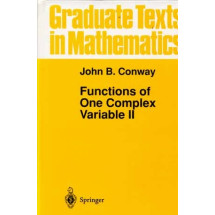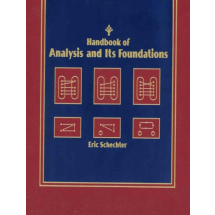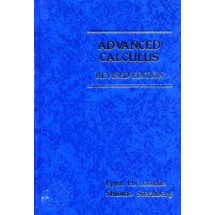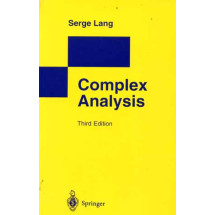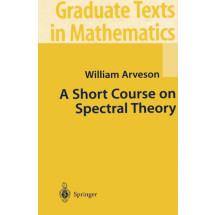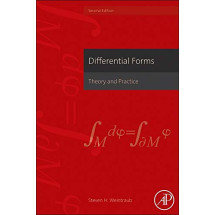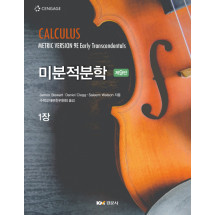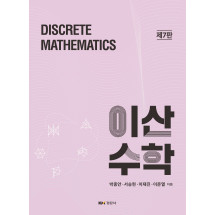A self-contained introduction to the fundamentals of mathematical analysis
Mathematical Analysis: A Concise Introduction presents the foundations of analysis and illustrates its role in mathematics. By focusing on the essentials, reinforcing learning through exercises, and featuring a unique "learn by doing" approach, the book develops the reader's proof writing skills and establishes fundamental comprehension of analysis that is essential for further exploration of pure and applied mathematics. This book is directly applicable to areas such as differential equations, probability theory, numerical analysis, differential geometry, and functional analysis.
Mathematical Analysis is composed of three parts:
?Part One presents the analysis of functions of one variable, including sequences, continuity, differentiation, Riemann integration, series, and the Lebesgue integral. A detailed explanation of proof writing is provided with specific attention devoted to standard proof techniques. To facilitate an efficient transition to more abstract settings, the results for single variable functions are proved using methods that translate to metric spaces.
?Part Two explores the more abstract counterparts of the concepts outlined earlier in the text. The reader is introduced to the fundamental spaces of analysis, including Lp spaces, and the book successfully details how appropriate definitions of integration, continuity, and differentiation lead to a powerful and widely applicable foundation for further study of applied mathematics. The interrelation between measure theory, topology, and differentiation is then examined in the proof of the Multidimensional Substitution Formula. Further areas of coverage in this section include manifolds, Stokes' Theorem, Hilbert spaces, the convergence of Fourier series, and Riesz' Representation Theorem.
?Part Three provides an overview of the motivations for analysis as well as its applications in various subjects. A special focus on ordinary and partial differential equations presents some theoretical and practical challenges that exist in these areas. Topical coverage includes Navier-Stokes equations and the finite element method.
Mathematical Analysis: A Concise Introduction includes an extensive index and over 900 exercises ranging in level of difficulty, from conceptual questions and adaptations of proofs to proofs with and without hints. These opportunities for reinforcement, along with the overall concise and well-organized treatment of analysis, make this book essential for readers in upper-undergraduate or beginning graduate mathematics courses who would like to build a solid foundation in analysis for further work in all analysis-based branches of mathematics.
Preface.
PART I. ANALYSIS OF FUNCTIONS OF A SINGLE REAL VARIABLE.
1. The Real Numbers.
1.1 Field Axioms.
1.2 Order Axioms.
1.3 Lowest Upper and Greatest Lower Bounds.
1.4 Natural Numbers, Integers and Rational Numbers.
1.5 Recursion, Induction, Summations and Products.
2. Sequences of Real Numbers.
2.1 Limits.
2.2 Limit Laws.
2.3 Cauchy Sequences.
2.4 Bounded Sequences.
2.5 Infinite Limits.
3. Continuous Functions.
3.1 Limits of Functions.
3.2 Limit Laws.
3.3 One-Sided Limits and Infinite Limits.
3.4 Continuity.
3.5 Properties of Continuous Functions.
3.6 Limits at Infinity.
4. Differentiable Functions.
4.1 Differentiability.
4.2 Differentiation Rules.
4.3 Rolle's Theorem and the Mean Value Theorem.
5. The Riemann Integral I.
5.1 Riemann Sums and the Integral.
5.2 Uniform Continuity and Integrability of Continuous Functions.
5.3 The Fundamental Theorem of Calculus.
5.4 The Darboux Integral.
6. Series of Real Numbers I.
6.1 Series as a Vehicle to Define Infinite Sums.
6.2 Absolute Convergence and Unconditional Convergence.
7. Some Set Theory.
7.1 The Algebra of Sets.
7.2 Countable Sets.
7.3 Uncountable Sets.
8. The Riemann Integral II.
8.1 Outer Lebesgue Measure.
8.2 Lebesgue's Criterion for Riemann Integrability.
8.3 More Integral Theorems.
8.4 Improper Riemann Integrals.
9. The Lebesgue Integral.
9.1 Lebesgue Measurable Sets.
9.2 Lebesgue Measurable Functions.
9.3 Lebesgue Integration.
9.4 Lebesgue Integrals vs. Riemann Integrals.
10. Series of Real Numbers II.
10.1 Limits Superior and Inferior.
10.2 The Root Test and the Ratio Test.
10.3 Power Series.
11. Sequences of Functions.
11.1 Notions of Convergence.
11.2 Uniform Convergence.
12. Transcendental Functions.
12.1 The Exponential Function.
12.2 Sine and Cosine.
12.3 L?H?opital's Rule.
13. Numerical Methods 203.
13.1 Approximation with Taylor Polynomials.
13.2 Newton's Method.
13.3 Numerical Integration.
PART II. ANALYSIS IN ABSTRACT SPACES.
14. Integration on Measure Spaces.
14.1 Measure Spaces.
14.2 Outer Measures.
14.3 Measurable Functions.
14.4 Integration of Measurable Functions.
14.5 Monotone and Dominated Convergence.
14.6 Convergence in Mean, in Measure and Almost Everywhere.
14.7 Product _-Algebras.
14.8 Product Measures and Fubini's Theorem.
15. The Abstract Venues for Analysis.
15.1 Abstraction I: Vector Spaces.
15.2 Representation of Elements: Bases and Dimension.
15.3 Identification of Spaces: Isomorphism.
15.4 Abstraction II: Inner Product Spaces.
15.5 Nicer Representations: Orthonormal Sets.
15.6 Abstraction III: Normed Spaces.
15.7 Abstraction IV: Metric Spaces.
15.8 L p Spaces.
15.9 Another Number Field: Complex Numbers.
16. The Topology of Metric Spaces.
16.1 Convergence of Sequences.
16.2 Completeness.
16.3 Continuous Functions.
16.4 Open and Closed Sets.
16.5 Compactness.
16.6 The Normed Topology of Rd.
16.7 Dense Subspaces.
16.8 Connectedness.
16.9 Locally Compact Spaces.
17. Differentiation in Normed Spaces.
17.1 Continuous Linear Functions.
17.2 Matrix Representation of Linear Functions.
17.3 Differentiability.
17.4 The Mean Value Theorem.
17.5 How Partial Derivatives Fit In.
17.6 Multilinear Functions (Tensors) .
17.7 Higher Derivatives.
17.8 The Implicit Function Theorem.
18. Measure, Topology and Differentiation.
18.1 Lebesgue Measurable Sets in Rd.
18.2 C1 and Approximation of Integrable Functions.
18.3 Tensor Algebra and Determinants.
18.4 Multidimensional Substitution.
19. Manifolds and Integral Theorems.
19.1 Manifolds.
19.2 Tangent Spaces and Differentiable Functions.
19.3 Differential Forms, Integrals over The Unit Cube.
19.4 k-Forms and Integrals over k-Chains.
19.5 Integration on Manifolds.
19.6 Stokes' Theorem.
20. Hilbert Spaces.
20.1 Orthonormal Bases.
20.2 Fourier Series.
20.3 The Riesz Representation Theorem.
PART III. APPLIED ANALYSIS.
21. Physics Background.
21.1 Harmonic Oscillation.
21.2 Heat and Diffusion.
21.3 Separation of Variables, Fourier Series and Ordinary Differential Equations.
21.4 Maxwell's Equations.
21.5 The Navier Stokes Equation for the Conservation of Mass.
22. Ordinary Differential Equations.
22.1 Banach Space Valued Differential Equations.
22.2 An Existence and Uniqueness Theorem.
22.3 Linear Differential Equations.
23. The Finite Element Method.
23.1 Ritz-Galerkin Approximation.
23.2 Weakly Differentiable Functions.
23.3 Sobolev Spaces.
23.4 Elliptic Differential Operators.
23.5 Finite Elements.
Conclusion and Outlook.
APPENDICES.
A. Logic.
A.1 Statements.
A.2 Negations.
B. Set Theory.
B.1 The Zermelo-Fraenkel Axioms.
B.2 Relations and Functions.
C. Natural Numbers, Integers and Rational Numbers.
C.1 The Natural Numbers.
C.2 The Integers.
C.3 The Rational Numbers.
Bibliography.
Index.


